Characterization of 3D Displacement and Stress Fields in Coal Based on CT Scans
Abstract
:1. Introduction
2. Materials and Methods
2.1. Sample Preparation
2.2. Experimental Device and Methods
2.3. Boundary Delineation of 3D CT Model
2.4. Displacement Field Algorithm and ROI Delineation
3. Results
3.1. Deformation and Failure Features
3.2. Results for 3D Displacement Field
3.3. Analysis of Simulation Results
4. Conclusions
- Primary fractures and minerals have a determining influence on the deformation and failure features of coal and are the key factors producing anisotropic coal deformation. The primary fractures propagate as compression increases and crisscross new fractures.
- The ROI displacement field data of different matrices in the coal sample follow a normal distribution, and the differences in the corresponding deformations under load are statistically significant. The deformation at the primary fractures increases substantially with stress, and the mineral region is also prone to large deformation from stress concentration. The increase in the displacement is promoted by the presence of fractures and inhibited in the presence of minerals.
- A highly complex coal stress state forms under an applied stress, and the distribution of minerals and fractures significantly affects the stress field distribution. The presence of minerals and fractures produces a prevalent shear stress in the coal that is mainly concentrated in the vicinity of where these entities are located and is highly unfavourable for sample stability.
- To ensure safe field operation, the mineral distribution features in coal seams and the development level and distribution features of primary fractures should be determined. Targeted measures can then be taken to improve the stress state and enhance the safety level.
Author Contributions
Funding
Institutional Review Board Statement
Informed Consent Statement
Data Availability Statement
Conflicts of Interest
References
- Sobczyk, J. A comparison of the influence of adsorbed gases on gas stresses leading to coal and gas outburst. Fuel 2014, 115, 288–294. [Google Scholar] [CrossRef]
- Sobczyk, J. The influence of sorption processes on gas stresses leading to the coal and gas outburst in the laboratory conditions. Fuel 2011, 90, 1018–1023. [Google Scholar] [CrossRef]
- Lu, X.; Armstrong, R.T.; Mostaghimi, P. High-pressure X-ray imaging to interpret coal permeability. Fuel 2018, 226, 573–582. [Google Scholar] [CrossRef]
- Tan, J.; Xie, J.; Li, L.; Lyu, Q.; Han, J.; Zhao, Z. Multifractal analysis of acoustic emissions during hydraulic fracturing experiments under uniaxial loading conditions: A Niutitang shale example. Geofluids 2020, 2020, 8845292. [Google Scholar] [CrossRef]
- Nie, B.; Fan, P.; Li, X. Quantitative investigation of anisotropic characteristics of methane-induced strain in coal based on coal particle tracking method with X-ray computer tomography. Fuel 2018, 214, 272–284. [Google Scholar] [CrossRef]
- Zhang, Z.; Xie, H.; Zhang, R.; Gao, M.; Ai, T.; Zha, E. Size and spatial fractal distributions of coal fracture networks under different mining-induced stress conditions. Int. J. Rock Mech. Min. 2020, 132, 104364. [Google Scholar] [CrossRef]
- Feng, Z.; Cai, T.; Zhou, D.; Zhao, D.; Zhao, Y.; Wang, C. Temperature and deformation changes in anthracite coal after methane adsorption. Fuel 2017, 192, 27–34. [Google Scholar] [CrossRef] [Green Version]
- Kawakata, H.; Cho, A.; Yanagidani, T.; Shimada, M. The observations of faulting in westerly granite under triaxial compression by X-ray CT scan. Int. J. Rock Mech. Min. Sci. Geomech. 1997, 34, 375. [Google Scholar] [CrossRef]
- Cao, W.; Yildirim, B.; Durucan, S.; Wolf, K.; Cai, W.; Agrawal, H.; Korre, A. Fracture behaviour and seismic response of naturally fractured coal subjected to true triaxial stresses and hydraulic fracturing. Fuel 2021, 288, 119618. [Google Scholar] [CrossRef]
- Fan, N.; Wang, J.; Deng, C.; Fan, Y.; Wang, T.; Guo, X. Quantitative characterization of coal microstructure and visualization seepage of macropores using CT-based 3D reconstruction. J. Nat. Gas Sci. Eng. 2020, 81, 103384. [Google Scholar] [CrossRef]
- Li, Y.T.; Jiang, Y.D.; Zhang, B.; Song, H.H.; Dong, W.B.; Wang, P.P. Investigation on the pore characteristics of coal specimens with bursting proneness. Fuel 2019, 9, 16518. [Google Scholar] [CrossRef] [PubMed]
- Li, Y.Y.; Cui, H.Q.; Zhang, P.; Wang, D.K.; Wei, J.P. Three-dimensional visualization and quantitative characterization of coal fracture dynamic evolution under uniaxial and triaxial compression based on CT scanning. Fuel 2020, 262, 116568. [Google Scholar] [CrossRef]
- Lu, W.; Wei, G.; Wang, Z.; Jia, T.; Sun, S.; Ju, Y. Micro-nano fine characterization of coal fracture evolution during the triaxial compression creep. Fuel 2021, 21, 495–504. [Google Scholar] [CrossRef] [PubMed]
- Liu, W.; Wang, G.; Han, D.; Xu, H.; Chu, X. Accurate characterization of coal pore and fissure structure based on CT 3D reconstruction and NMR. J. Nat. Gas Sci. Eng. 2021, 96, 104242. [Google Scholar] [CrossRef]
- Tao, S.; Pan, Z.J.; Chen, S.D.; Tang, S.L. Coal seam porosity and fracture heterogeneity of marcolithotypes in the Fanzhuang Block, southern Qinshui Basin, China. J. Nat. Gas Sci. Eng. 2019, 66, 148–158. [Google Scholar] [CrossRef]
- Wang, G.; Han, D.; Qin, X.; Liu, Z.; Liu, J. A comprehensive method for studying pore structure and seepage characteristics of coal mass based on 3D CT reconstruction and NMR. Fuel 2020, 281, 118735. [Google Scholar] [CrossRef]
- Wang, G.; Qin, X.; Han, D.; Liu, Z. Study on seepage and deformation characteristics of coal microstructure by 3D reconstruction of CT images at high temperatures. Fuel 2021, 31, 175–185. [Google Scholar] [CrossRef]
- Wang, G.; Han, D.Y.; Jiang, C.H.; Zhang, Z.Y. Seepage characteristics of fracture and dead-end pore structure in coal at micro- and meso-scales. Fuel 2020, 266, 117058. [Google Scholar] [CrossRef]
- Zhang, G.; Ranjith, P.G.; Fu, X.; Li, X. Pore-fracture alteration of different rank coals: Implications for CO2 sequestration in coal. Fuel 2021, 289, 119081. [Google Scholar] [CrossRef]
- Wang, D.; Zeng, F.; Wei, J.; Zhang, H.; Wu, Y.; Wei, Q. Quantitative analysis of fracture dynamic evolution in coal subjected to uniaxial and triaxial compression loads based on industrial CT and fractal theory. J. Pet. Sci. Eng. 2021, 196, 108051. [Google Scholar] [CrossRef]
- Mao, L.; Lian, X.; Hao, N.; Wei, F.; An, L. 3D strain measurement in coal using digital volumetric speckle photography. J. China Coal Soc. 2015, 40, 65–72. [Google Scholar]
- Sampath, K.H.S.M.; Perera, M.S.A.; Elsworth, D.; Matthai, S.K.; Ranjith, P.G.; Li, D. Discrete fracture matrix modelling of fully-coupled CO2 flow-Deformation processes in fractured coal. Int. J. Rock Mech. Min. 2021, 138, 104644. [Google Scholar] [CrossRef]
- Roslin, A.; Pokrajac, D.; Zhou, Y. Cleat structure analysis and permeability simulation of coal samples based on micro-computed tomography (micro-CT) and scan electron microscopy (SEM) technology. Fuel 2019, 254, 115579. [Google Scholar] [CrossRef]
- Wu, Y.; Yang, D.; Wei, J.; Yao, B.; Zhang, H.; Fu, J.; Zeng, F. Damage constitutive model of gas-bearing coal using industrial CT scanning technology. J. Nat. Gas Sci. Eng. 2022, 101, 104543. [Google Scholar] [CrossRef]
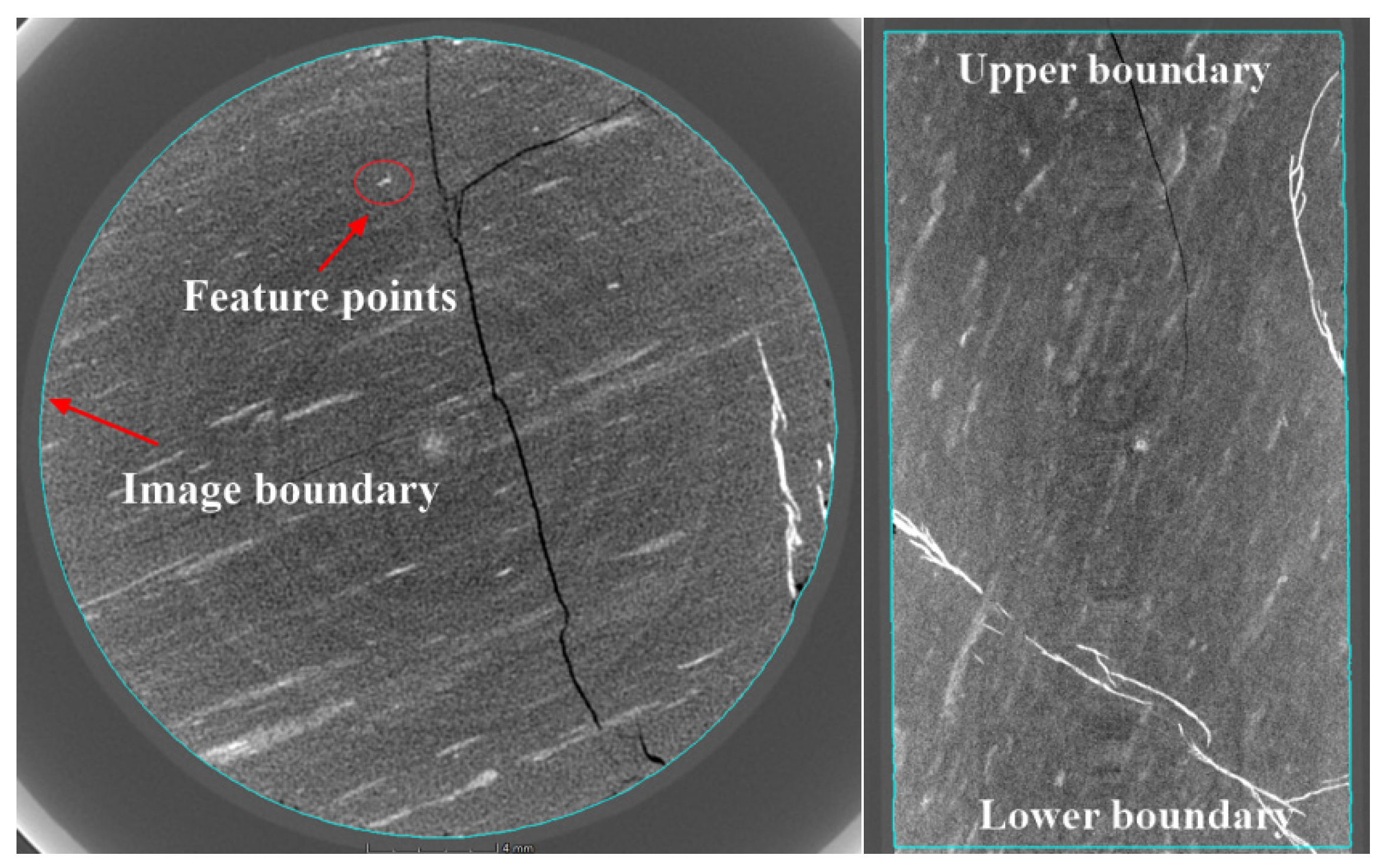
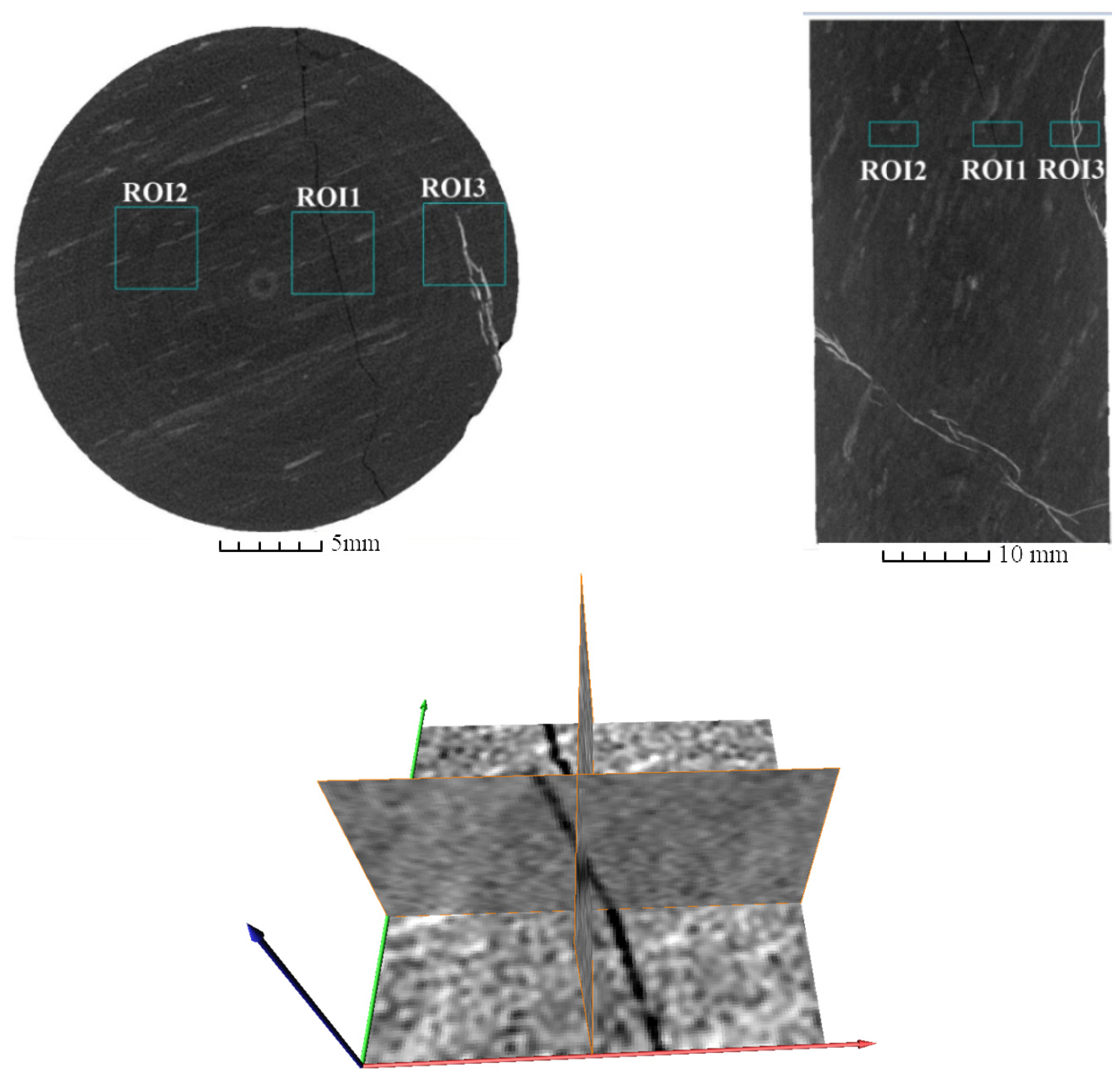
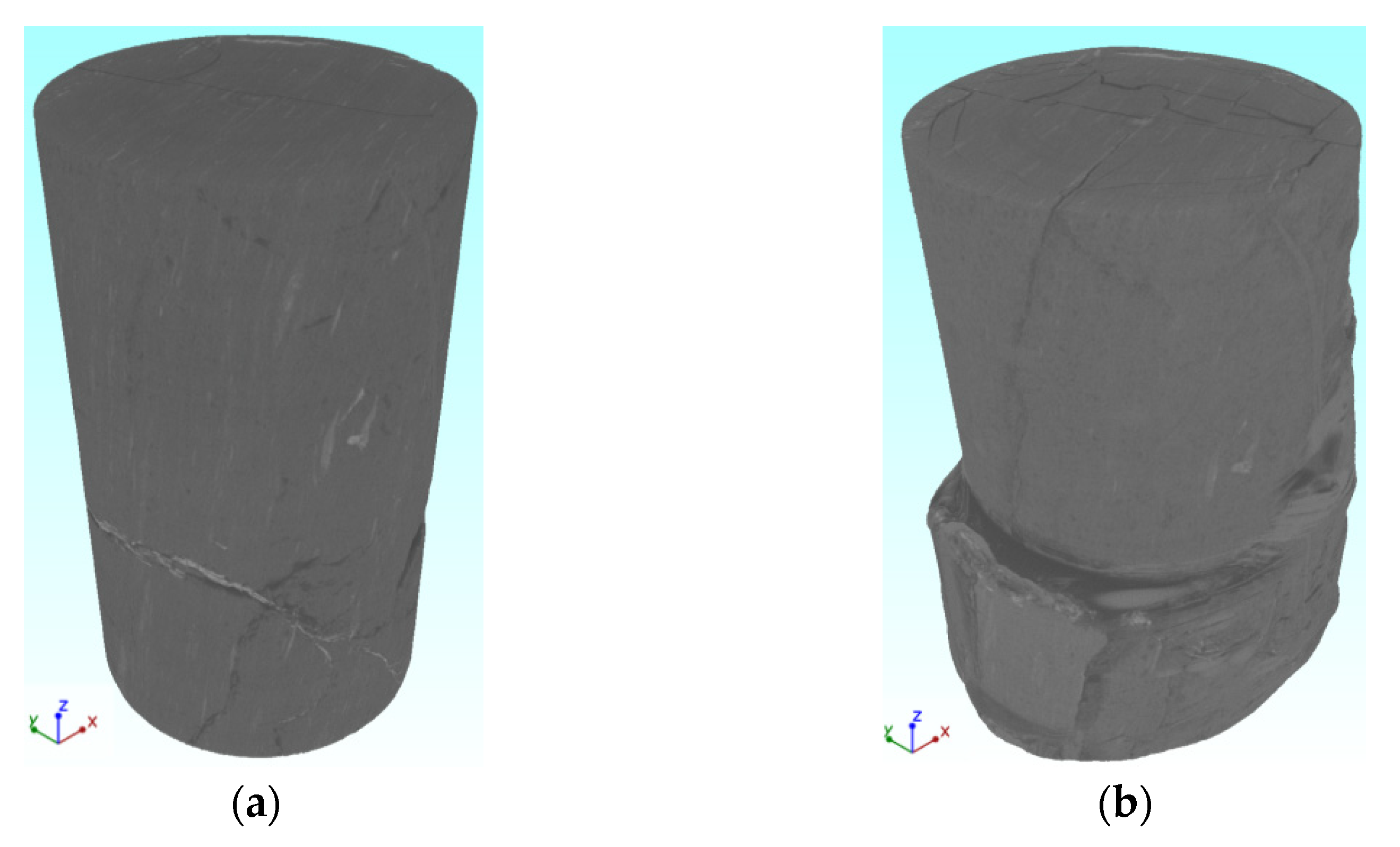


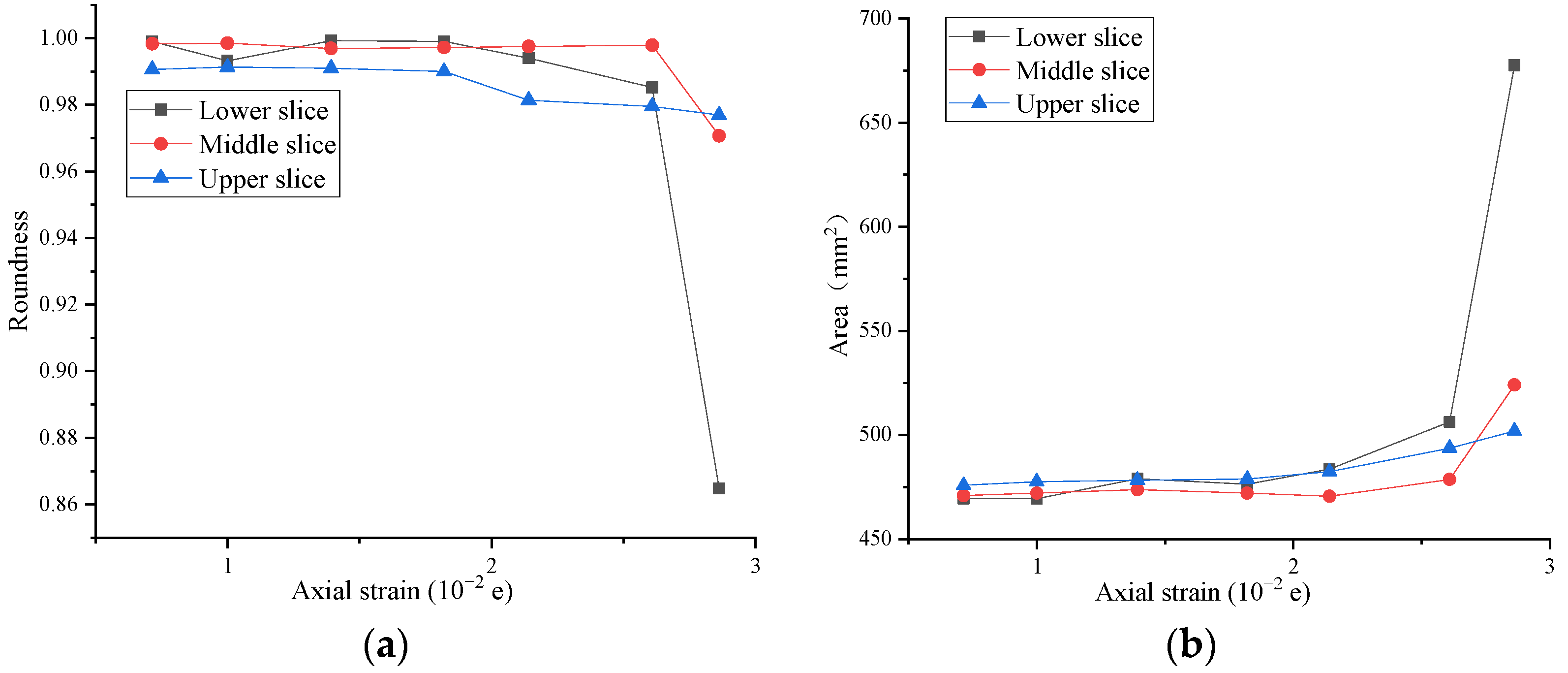


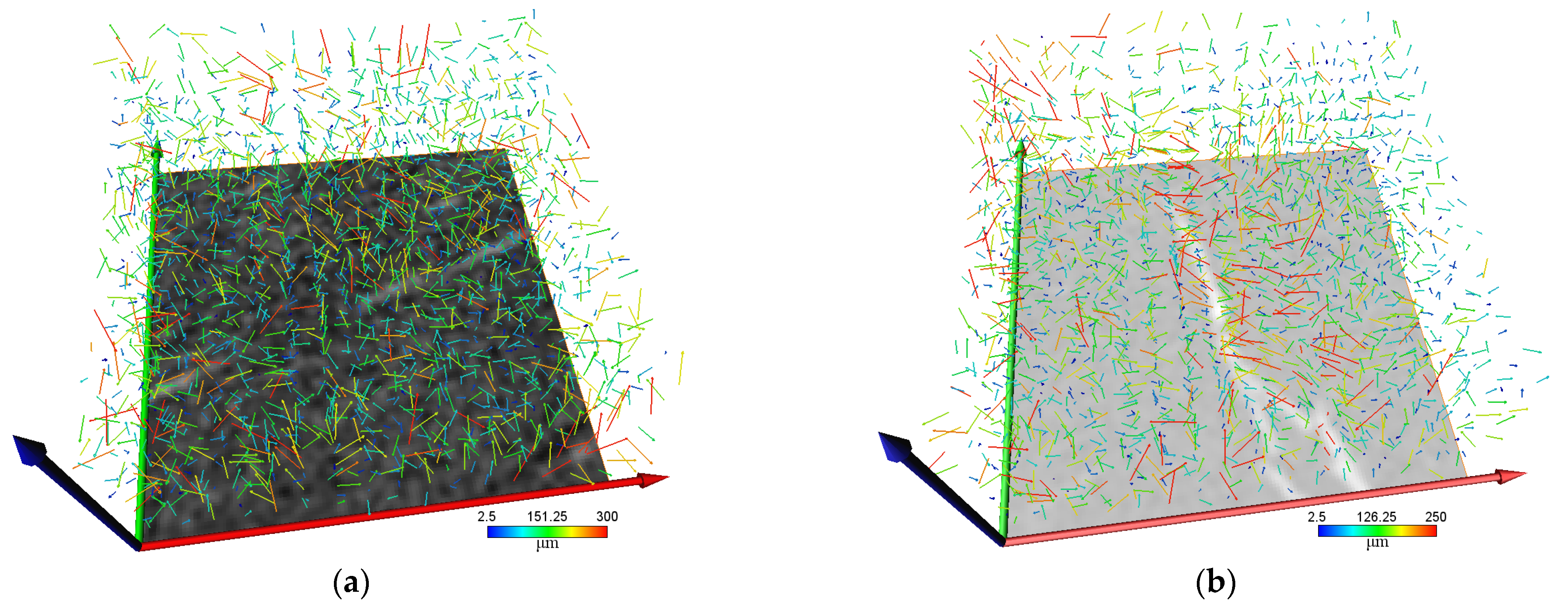


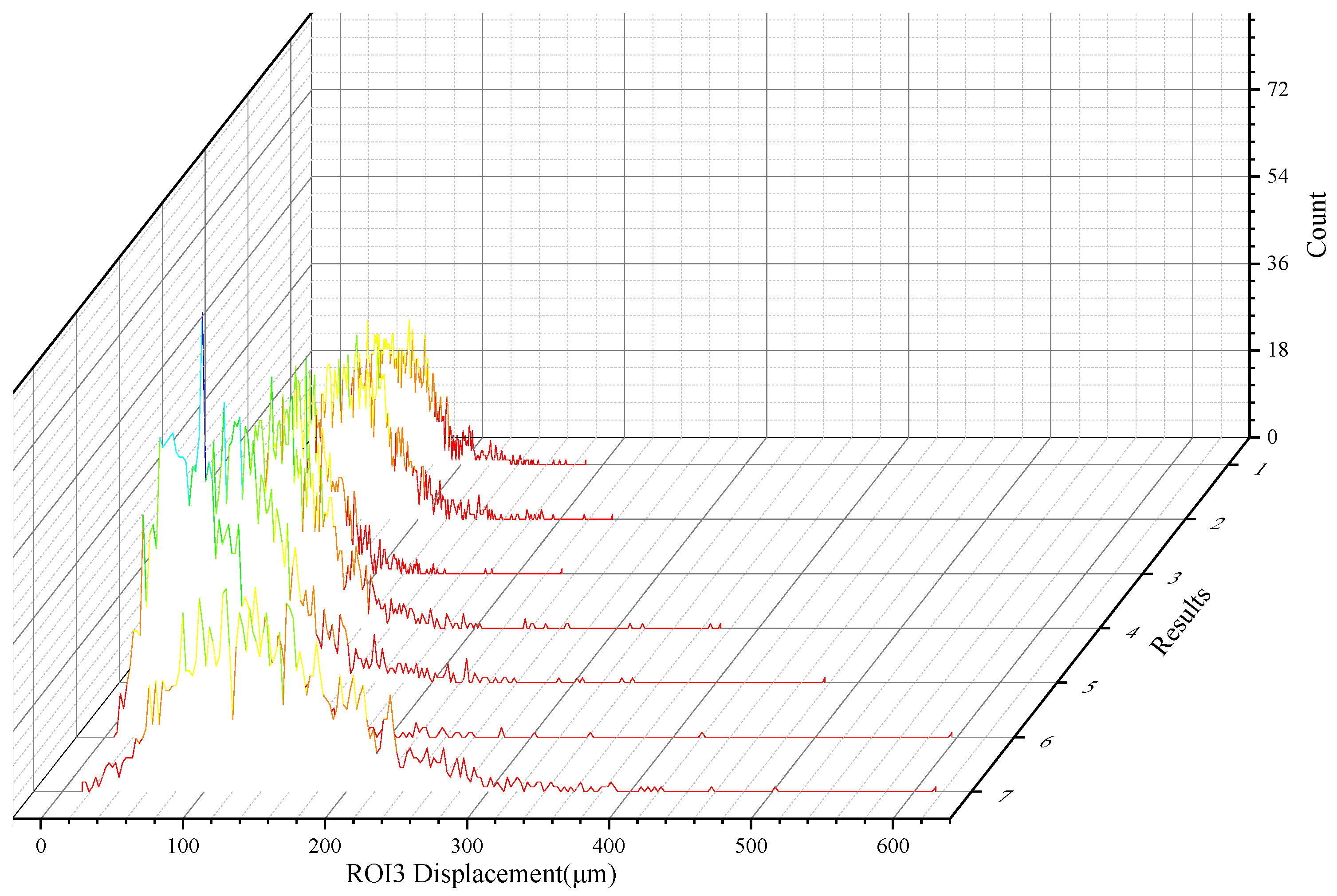
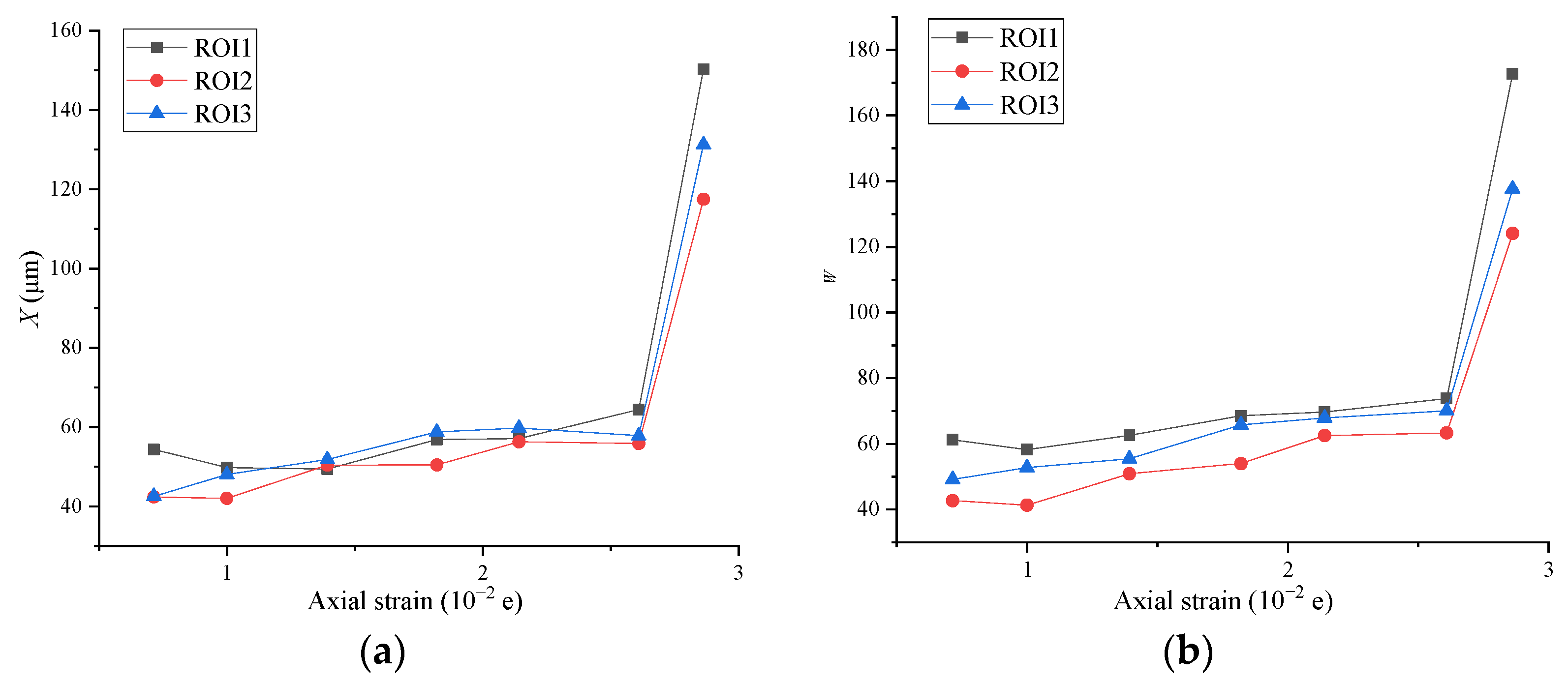

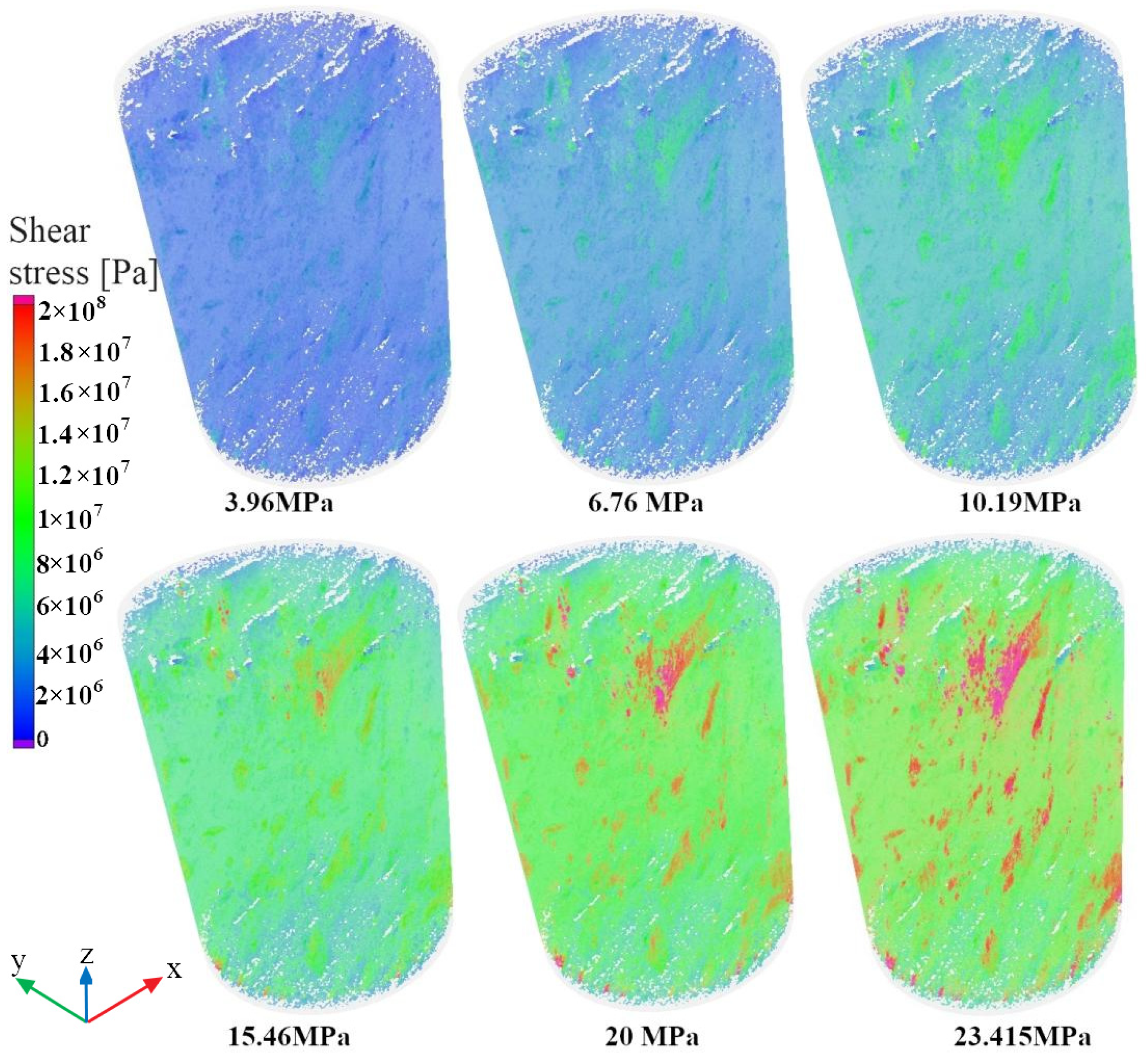

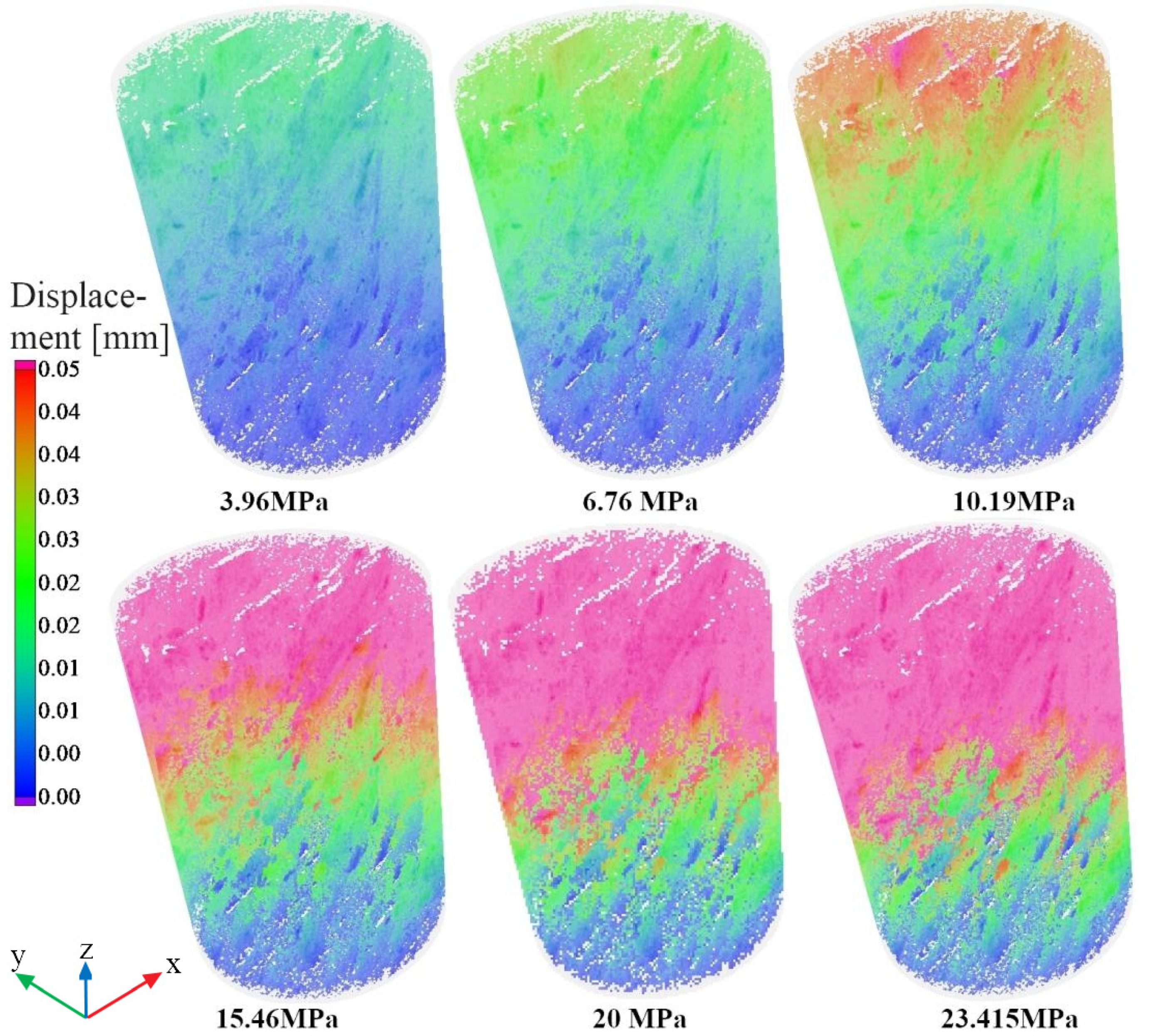

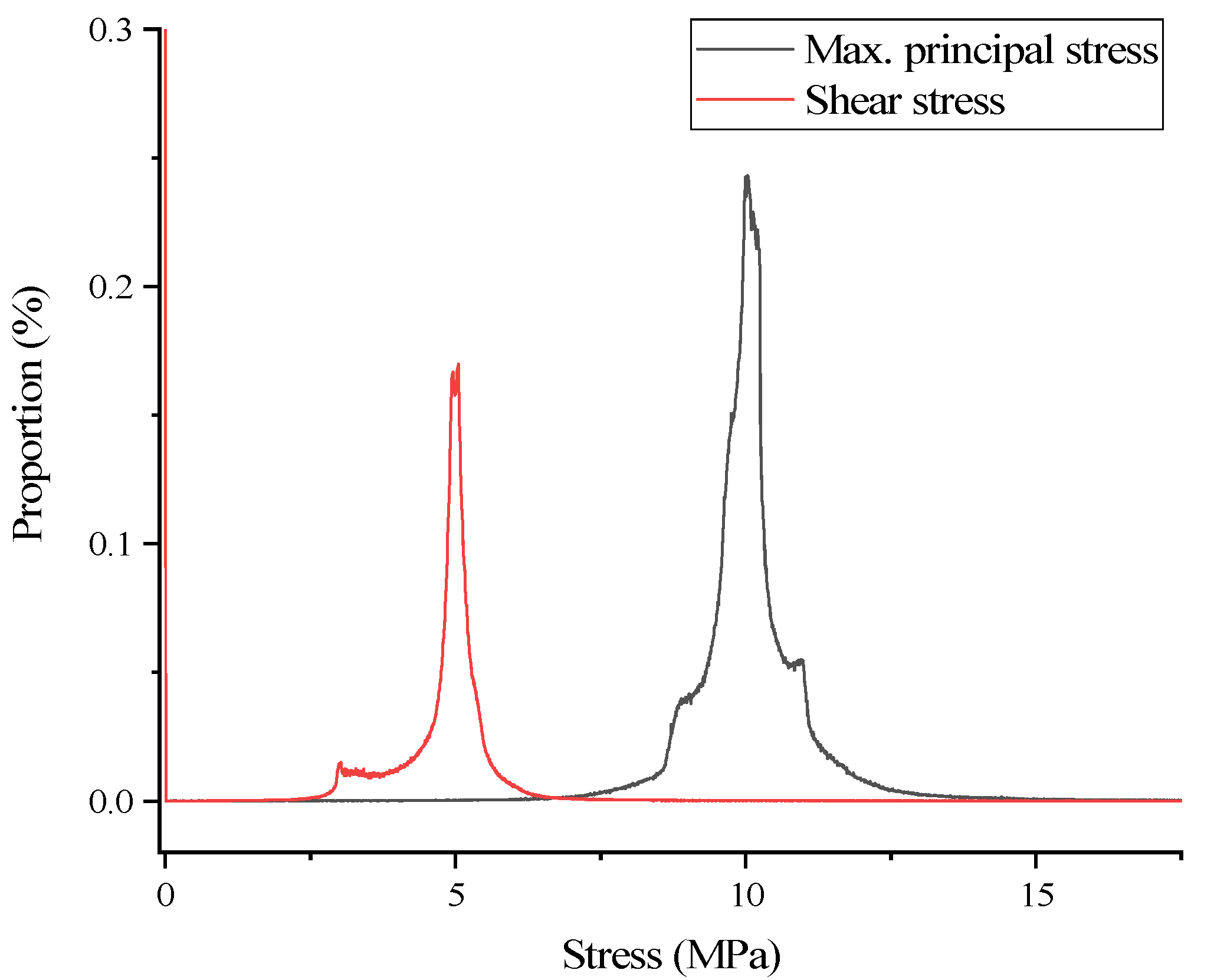


| Item | Stage | ROI1 | ROI2 | ROI3 |
|---|---|---|---|---|
| Mean displacement | All stages (μm) | 76.887 | 73.613 | 66.089 |
| Post-peak stage (μm) | 148.336 | 136.263 | 117.470 |
Publisher’s Note: MDPI stays neutral with regard to jurisdictional claims in published maps and institutional affiliations. |
© 2022 by the authors. Licensee MDPI, Basel, Switzerland. This article is an open access article distributed under the terms and conditions of the Creative Commons Attribution (CC BY) license (https://creativecommons.org/licenses/by/4.0/).
Share and Cite
Li, Q.; Li, Z.; Li, P.; Pan, R.; Zhang, Q. Characterization of 3D Displacement and Stress Fields in Coal Based on CT Scans. Mathematics 2022, 10, 2512. https://doi.org/10.3390/math10142512
Li Q, Li Z, Li P, Pan R, Zhang Q. Characterization of 3D Displacement and Stress Fields in Coal Based on CT Scans. Mathematics. 2022; 10(14):2512. https://doi.org/10.3390/math10142512
Chicago/Turabian StyleLi, Qi, Zhen Li, Peng Li, Ruikai Pan, and Qingqing Zhang. 2022. "Characterization of 3D Displacement and Stress Fields in Coal Based on CT Scans" Mathematics 10, no. 14: 2512. https://doi.org/10.3390/math10142512






